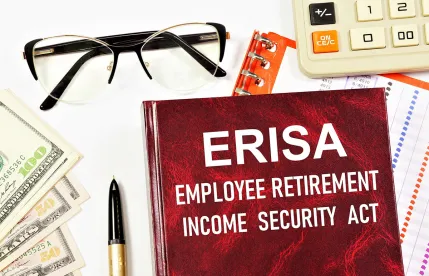Retirement plan disclosures required by the Employee Retirement Income Security Act (ERISA) may be delivered by electronic media under the Department of Labor’s (DOL) updated electronic distribution regulation.
Leveraging modern communication methods to distribute employee benefit plan documents electronically saves time and money, but manufacturers often have limited options for doing so under the DOL’s two traditional safe harbor rules. Moreover, the nature of the workforce (employees working on the manufacturing floor and in varying worksites) meant that manufacturers were often left having to physically mail the employees benefit plan documents and notices to employees. Not only can a physical mailing be an administrative headache, but it can be expensive. The DOL’s updated electronic distribution regulation expands the categories of employees who can receive retirement plan documents electrically, allowing a broader range of manufacturers to use technology to more easily comply with the requirement to distribute benefit documents to employees.
Background
Prior to the updated guidance, employers wanting to distribute employee benefit plan documents electronically may do so under two voluntary safe harbor rules. The rules require that the employer:
-
Follow an intricate process to obtain an employee’s affirmative consent to receive documents electronically; or
-
Provide documents electronically to employees who have access to a computer as an integral part of their job.
In a decision particularly limiting to the manufacturing sector, the DOL took the position that it does not consider computer stations provided to employees in a common area to meet the requirement of having effective access to the computer. As a result, the vast majority of manufacturers were precluded from electronically distributing participant notices under the traditional safe harbor standards unless the employee affirmatively consents.
Expanded Opportunity for Electronic Distribution
Under an additional voluntary safe harbor rule released by the DOL, employers have a new option for distributing benefit plan documents electronically — one that may be ideal for manufacturers with employees working on the floor or in varying job sites away from a computer.
The new safe harbor recognizes the fact that employees do not have to be sitting at a computer to effectively access electronic documents. It does not look at whether an employee has access to a computer as an integral part of their job. Instead, it focuses on whether the employee provided an email address or smartphone number or was assigned an email address by the employer.
Following are some key requirements of the new voluntary safe harbor rule:
-
Covered individuals include employees who have provided the employer or plan with an email address or a smartphone number or who are assigned an email address by the employer.
-
Employers can electronically distribute retirement plan documents required to be distributed by Title 1 of ERISA, which includes, for example, Summary Plan Descriptions, Summary of Material Modifications, pension benefit statements, and blackout notices, but not those that must be provided upon request. Importantly, the new safe harbor applies only to retirement plan disclosures required by ERISA — it does not currently apply to health and welfare plan disclosures.
-
Before electronically distributing these documents, the plan administrator must provide an individualized paper notice that describes the documents that may be distributed electronically and the right to opt out, along with other required content.
-
To distribute covered retirement documents electronically, plan administrators may post them on a website or send them directly to the individual’s email address. In both cases, the plan administrator must follow a number of requirements aimed at ensuring the individuals know of the document’s availability and their rights.
***
Manufacturers should take time to evaluate whether the new voluntary safe harbor rule could be beneficial to assist in streamlining compliance with retirement plan distribution requirements.
Manufacturers considering implementing this safe harbor or either of the existing safe harbors should work with an experienced attorney in their jurisdiction.




 />i
/>i


